The 32nd edition of the Montreal International Fireworks Competition, which had not begun with obvious contenders to the podium, has finally turned into an epic battle for the Gold Jupiter! Ricardo Caballer and Martin Hildeberg, who appear to have a friendly relationship in other respects, have competed one against the other a couple of times, including in Montreal in 2005 and Hannover in 2015. Both openly strived for the highest position on the podium. We will know very soon who gets the Gold Jupiter but, in meantime, the audience is certainly the winner.
I highly anticipated this show and it is obvious that I wasn’t alone. Countless aficionados have converged to La Ronde, many from the United States; some pyros from the Philippines have even been spotted (with some cues from forum member Vander). Following the city tour
A Night in Gothenburg in 2005 and
DJ’s Memories in 2010, Göteborgs FyrverkeriFabrik (GFF) presented
The Joy of Life. I can’t imagine a better title to express how blessed I felt, tonight, having the opportunity to attend a such extravaganza. Through this 30 minutes 20 seconds
excellent show, I frequently beated the ground with both feets and I could not believe how time flew!
The setup of this display speaks about the complexity of technical design. In addition to the four permanent firing ramps and a fifth ramp made of five floating platforms, a lift held a 360-degree device more than 40 meters above the ground in the middle of the 2nd ramp (as a comparison, the purple and yellow Vampire roller coaster located next to the firing area reaches 32m). There were also nine firing positions along a “sky ladder” hanging from the lift platform, thus creating what we may call
a vertical firing ramp (the 6th ramp?!). Each position had multiple devices arranged with different angles. In addition, nine poles along the 3rd ramp supported other pieces. These structures helped to create many horizontal sequences, among other things. It is also worth to note that the central platform of the 5th ramp was larger than usual, a lot of pyrotechnic effects being lit up closer to the audience than what the permanent ramps allow.
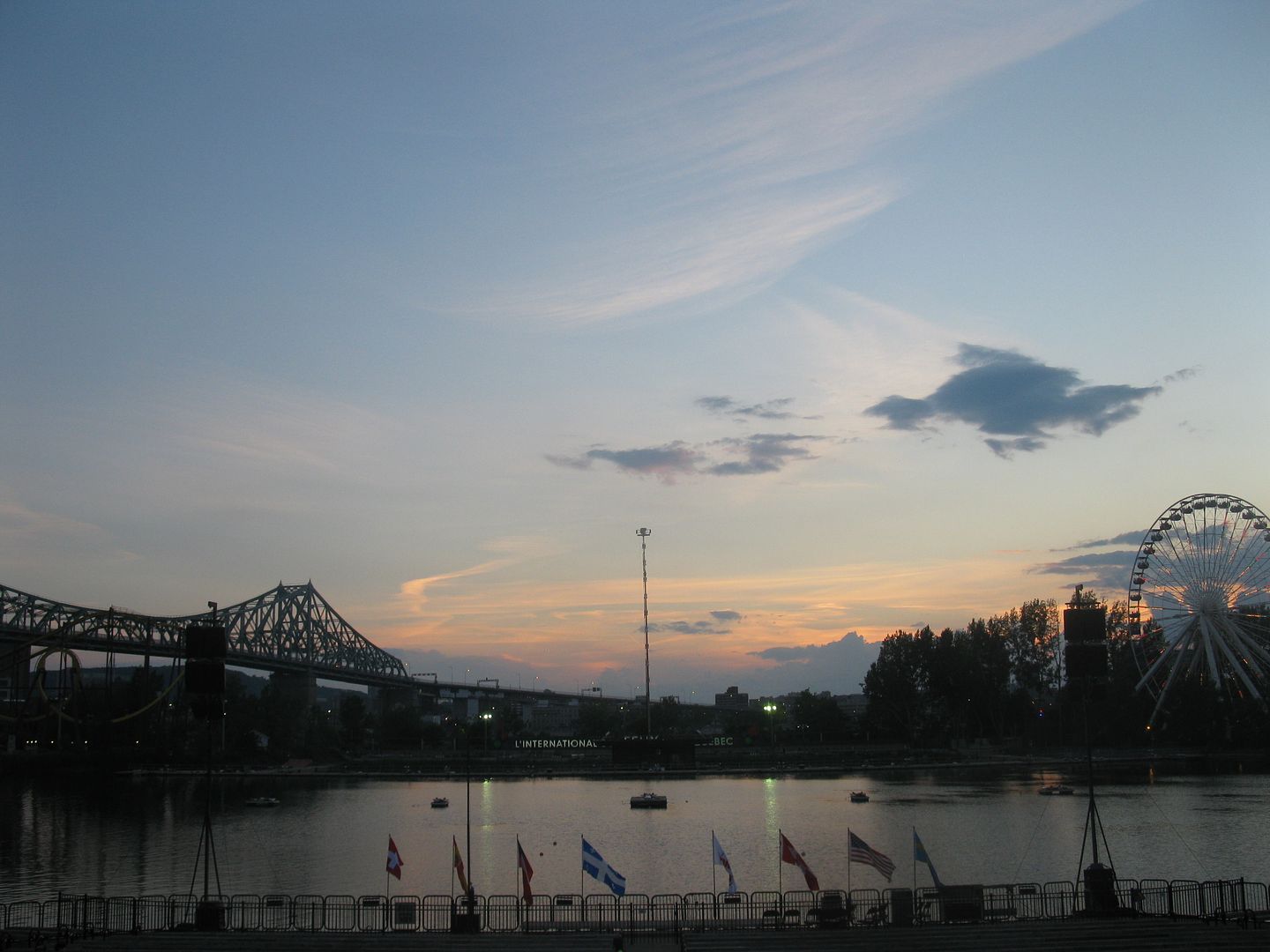
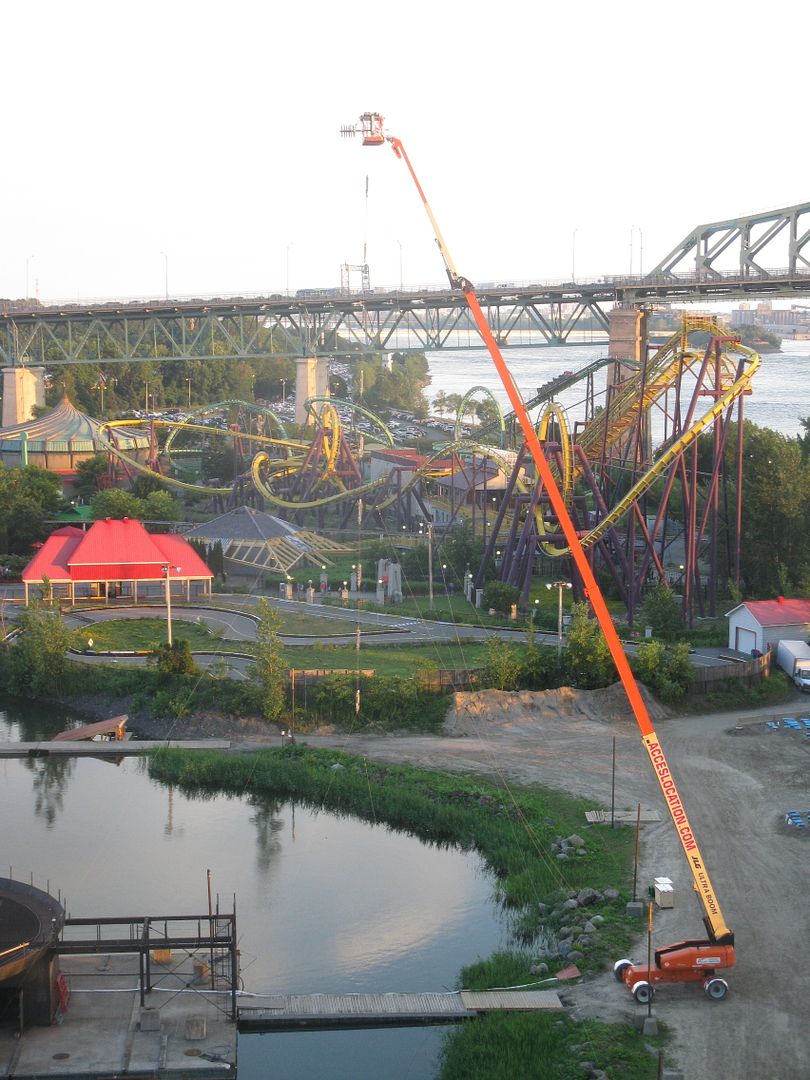
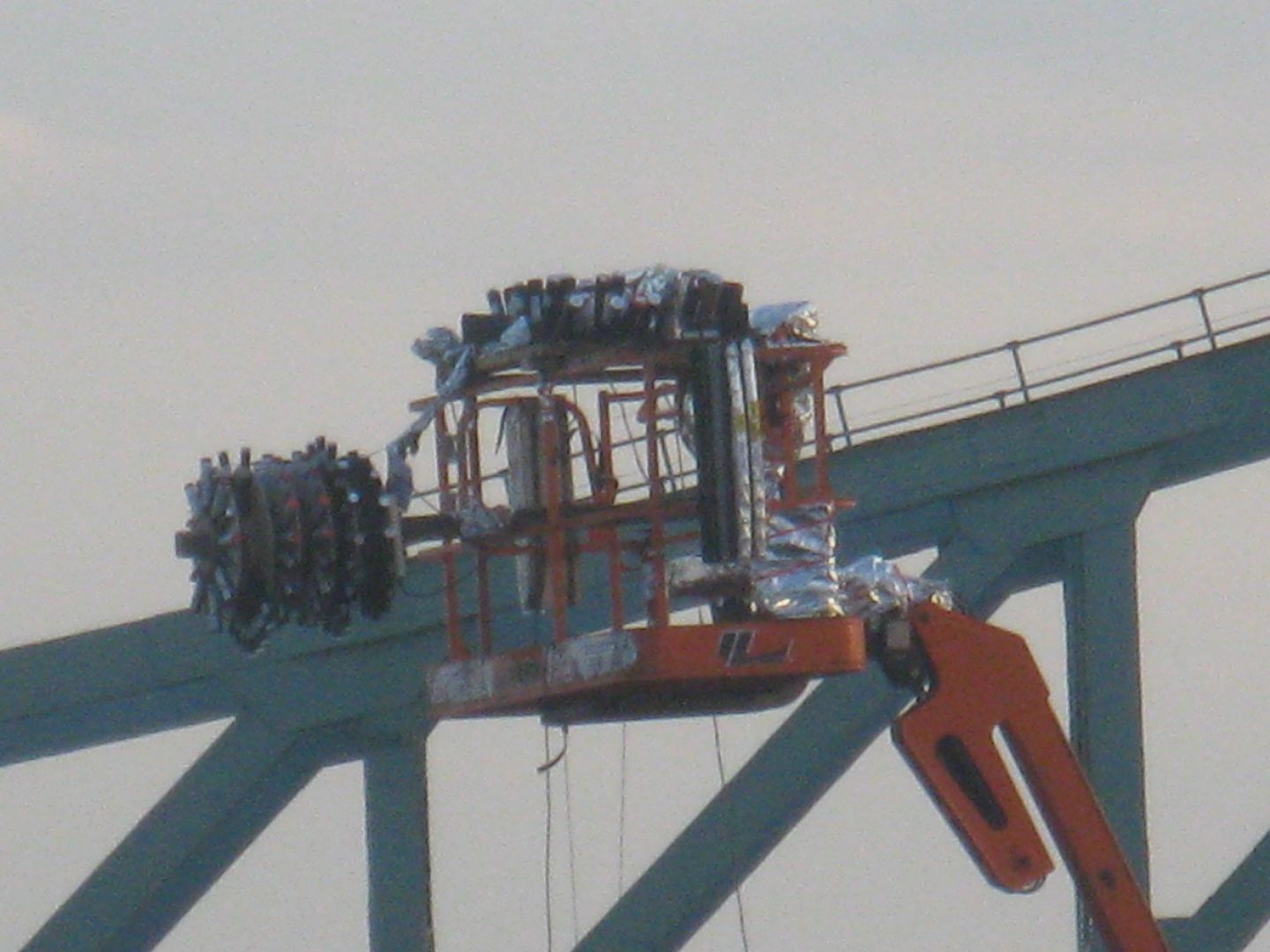
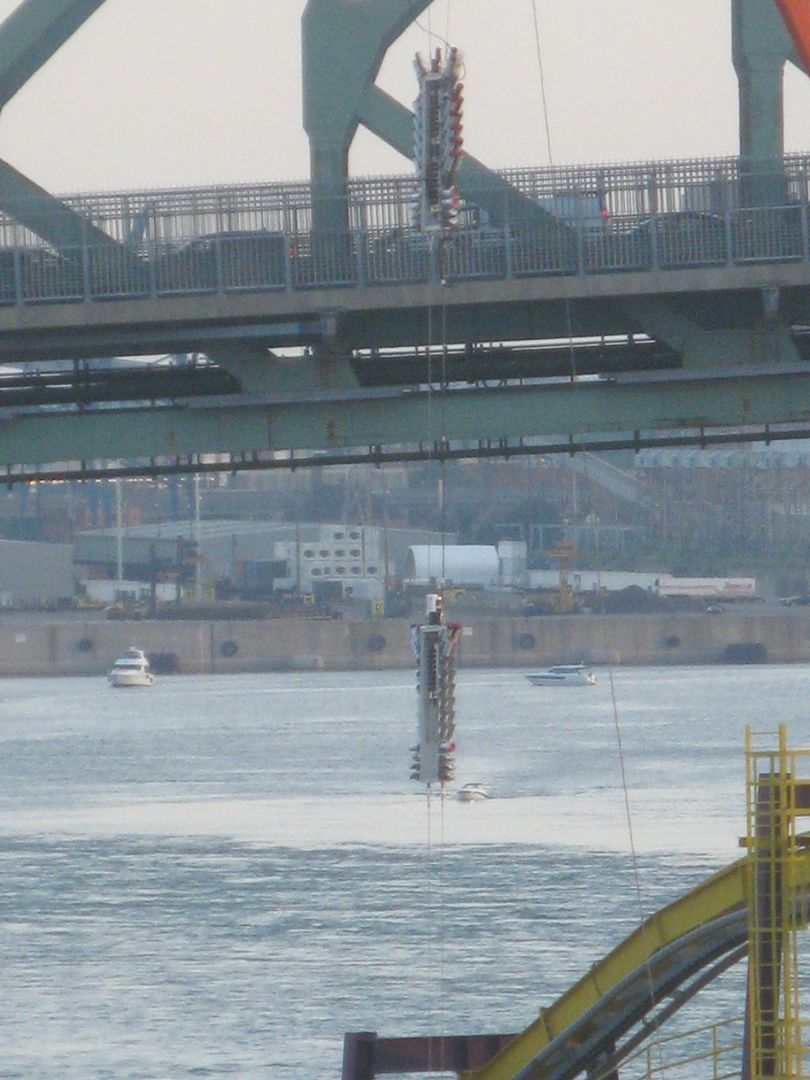
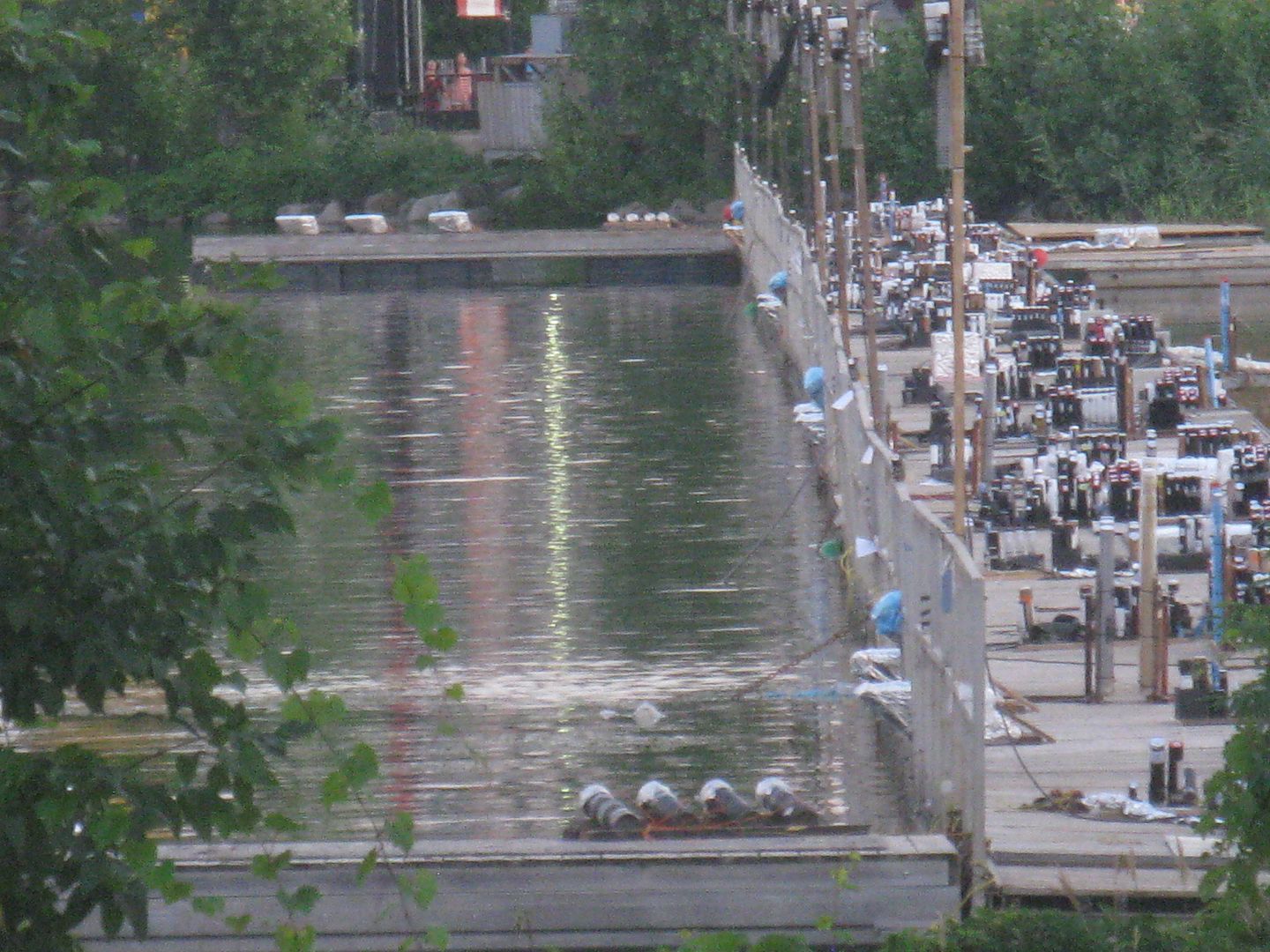
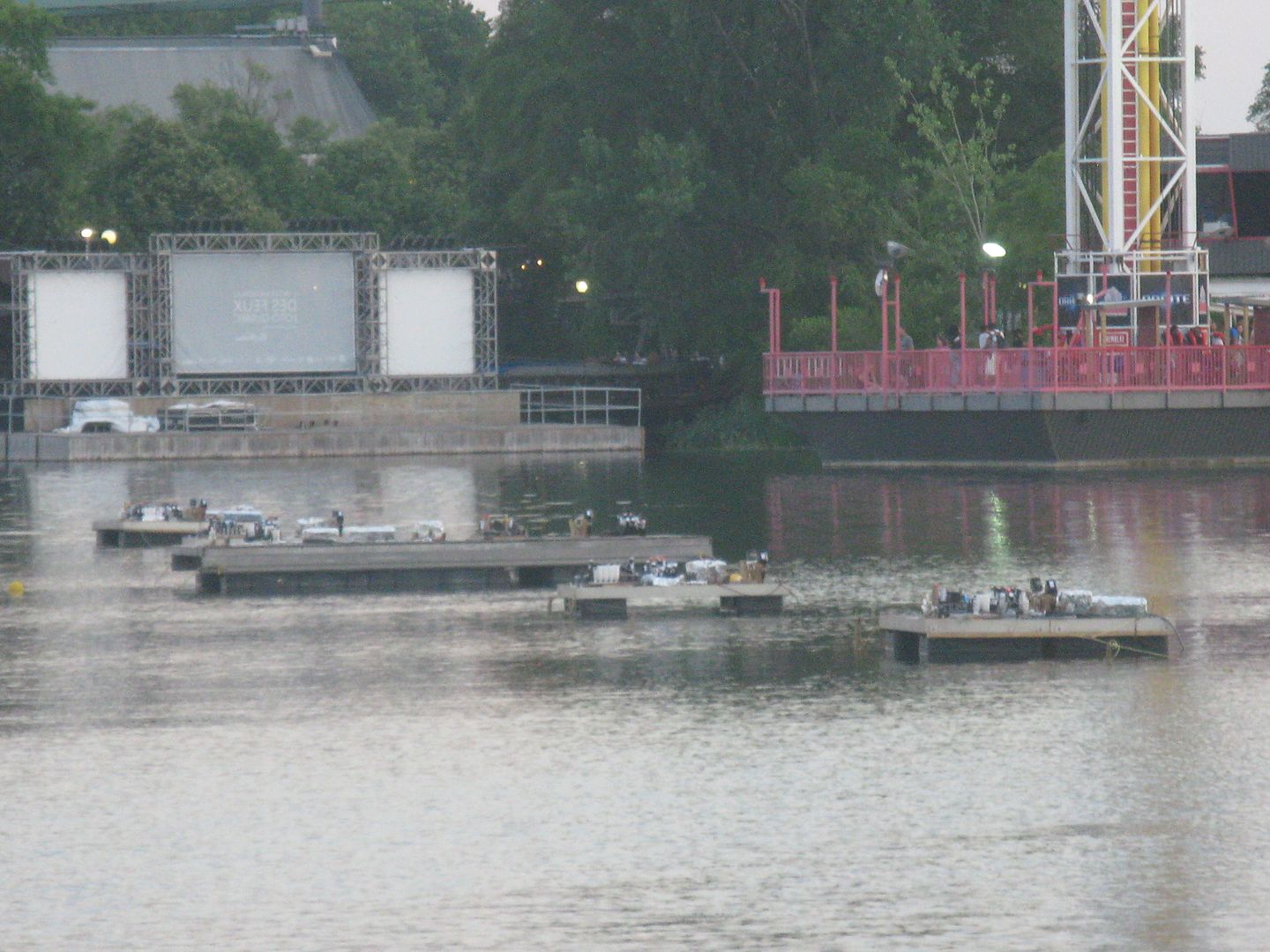
I have been very impressed about the variety of effects coming from the “sky ladder” (reminding me Grupo Luso Pirotecnia’s ring in 2002 and Pyroemotions’ circular slices in 2013) and, more important, their integration into many sequences. We are used to chase sequences firing pyrotechnic effects from one side to the other side of the firing area, typically along the 3rd ramp. The sky ladder effectively added a vertical dimension to these very same chase sequences.
As soon as the climactic opening segment, it came into life as we saw sequences of gerbs from ramps 3, 5 and the sky ladder. During the French-version of
The Bare Necessities, a fanatic of the Jungle Book, sat next to me, highlighted the trumpet shape made with mines, synchronized to the notes from the same instrument. On the music of
Imagine Dragons, fast sequences of photoflashes extended from ramp 3 to the hanging positions. On the corresponding lyrics of
Happy, a set of mines burst from the top of the sky ladder to make a giant smiley face (it is a shame that it has not been repeated on the same lyrics, as it was the case with the YMCA letters in 2010, so more people could have seen it).
I felt that we saw a wide range of pyrotechnic effects tonight and designers have arranged them in a such way that they were not lost into the most active parts of the show: shells of flying fish on
The Bare Necessities; volleys of horsetails on
Beautiful Day, other horsetails ending in blue and red stars on
Feeling Good; multibreak shells and studatas on
I Got Life; long duration (almost 30 seconds) cakes of meteor-headed comets, mushroom shells, and shells of stars with a sequential change of colours on
Imagine Dragons; V-shape fountains and thick fans (including two 90-degree “fans”) of comets on
Happy; a well-done flight of double-ascension girandolas (reminiscent of the 2010 show), shells of triple rings and a carpet of nautical mines on
The Time of my Life; shells of blue falling leaves early, other of red falling leaves turning in strobes later; very large shells of go-getters, studatas and nautical shells on
You Can’t Stop the Beat. Whereas Ricasa focused on small devices, GFF had a good balance of large and small size effects. While red and blue were frequent, we had a good range of colours and some changing-colour effects.
The soundtrack was a departure from the 2010
DJ’s Memories. Whereas the previous GFF performance in Montreal featured 22 segments, this show had 11. The Swedish entrant had previously shown great abilities to mix the musics and to overlap pyrotechnic components of successive parts, so I was surprised to not have the same in
The Joy of Life. The musics was also very engaging, while GFF took the risk to explore less popular repertoires, including the classical opening on Ponchielli’s
La Gioconda, and less famous songs like
You Can’t Stop the Beat, which has a great pace which was accurately reflected by the fireworks.
A couple of seconds after the beginning of the show, I told to a pyro friend sat next to me that it really had the same style than the 2010 performance: I felt that we could acknowledge Martin Hildeberg’s signature which, to my eyes, combines popular musics with razor-shape synchronization and detail-oriented pyromusical design. Then, in subsequent segments, the synchronization was not done in the same way and we didn't find the same level of details. During the protocol, two or three crew members have been introduced as designers of the show (including Hilderberg, of course). I hypothesize that Martin Hildeberg has been the (main) designer of the 1st, 2nd, 9th, 10th and 11th segments, whereas segments on the musics
I Got Life and
Feeling Good were mostly done by other designers; it is more difficult to predict for other parts, but the main point is that the show lacks a little of consistency, but it is a minor point.
I also saw some asymmetrical patterns, especially during the finale as some positions didn’t come into life, in particular on the 5th ramp. Fortunately, it didn’t impact the very intense finale which, once again, caused me to become almost out of control, screaming and beating the ground with my feets.
-----
GFF is certainly a strong contender for the podium. However, it is especially difficult to rank the Spanish and the Swedish entrants, as both made fantastic performances! There are only thin differences. I had to use the evaluation grid to properly weight all criteria but, even with that, I am tormented as my grades are very close. I feel that I nonetheless have to make a choice!
Synchronization (10 points). The Spanish show was more consistent and reached higher precision – especially with the piano part – than the Swedish show.
Quality of soundtrack (15 points). Both were similar regarding how pieces were edited but, in the Spanish show, the narrative helped to stress the meaning of the music choices and its fit with the theme. However, I have to say that it was not very obvious when we heard it and may required good knowledge in arts or some research to get it.
Quality of pieces (15 points). Colours were less diverse and less bright in the Spanish show, where the range of effects also appeared more limited to me ; the letters Montreal 2016 were not fully effective as many people didn’t notice them with repeat viewing. That was better in the Swedish show, both for the colours and the range of effects.
Technical design (30 points). While the number of pieces was more important in the Spanish show, the Swedish team reached a better balance between various size of effects. The Spanish team had nice horizontal sequences, but the Swedish one achieved the same thing and even better with its “sky ladder”, which behaved like a vertical ramp. I believe that Ricasa put more efforts into its technical design due to the quantity of one-shot pieces and the number of cues to fire them, but GFF technical design appeared more effective and it was effective as well.
Pyromusical design (30 points). GFF design was often evocative of the songs, but it was not as consistent as the Spanish show. I believe that Ricasa was, to a certain extent, more successful to create some dramatic atmosphere during the display. Also, GFF has suffered of minor firing problems, which didn’t seem to be the case for Ricasa.
So my personal ranking :
1. Ricasa (Spain) [very tight]
2. Göteborgs FyrverkeriFabrik (Sweden) [very tight]
3. Sugyp (Switzerland)
4. Western Enterprises (United States)
5. Pirotecnia SPA (Chile)
6. Big Bang Fireworks (Canada)
My jury predictions appear in the corresponding thread,
here.
Fred
